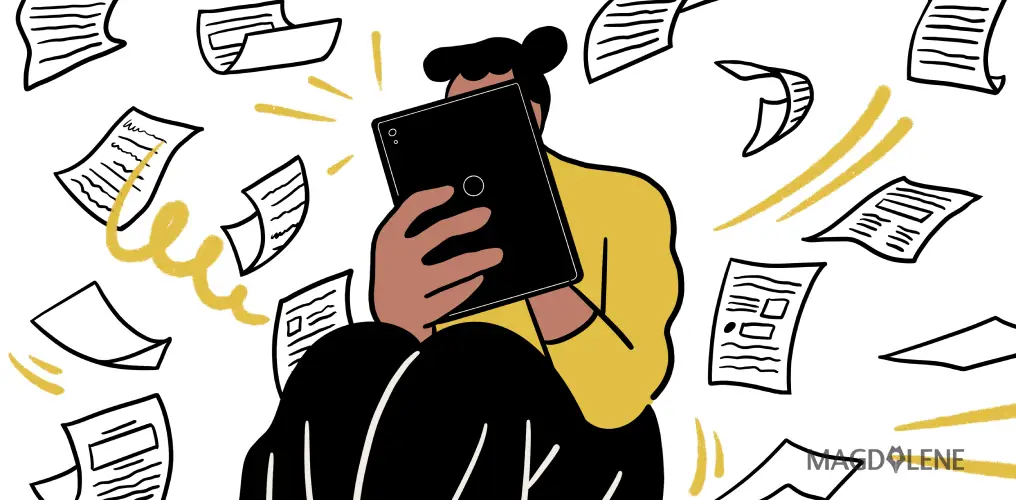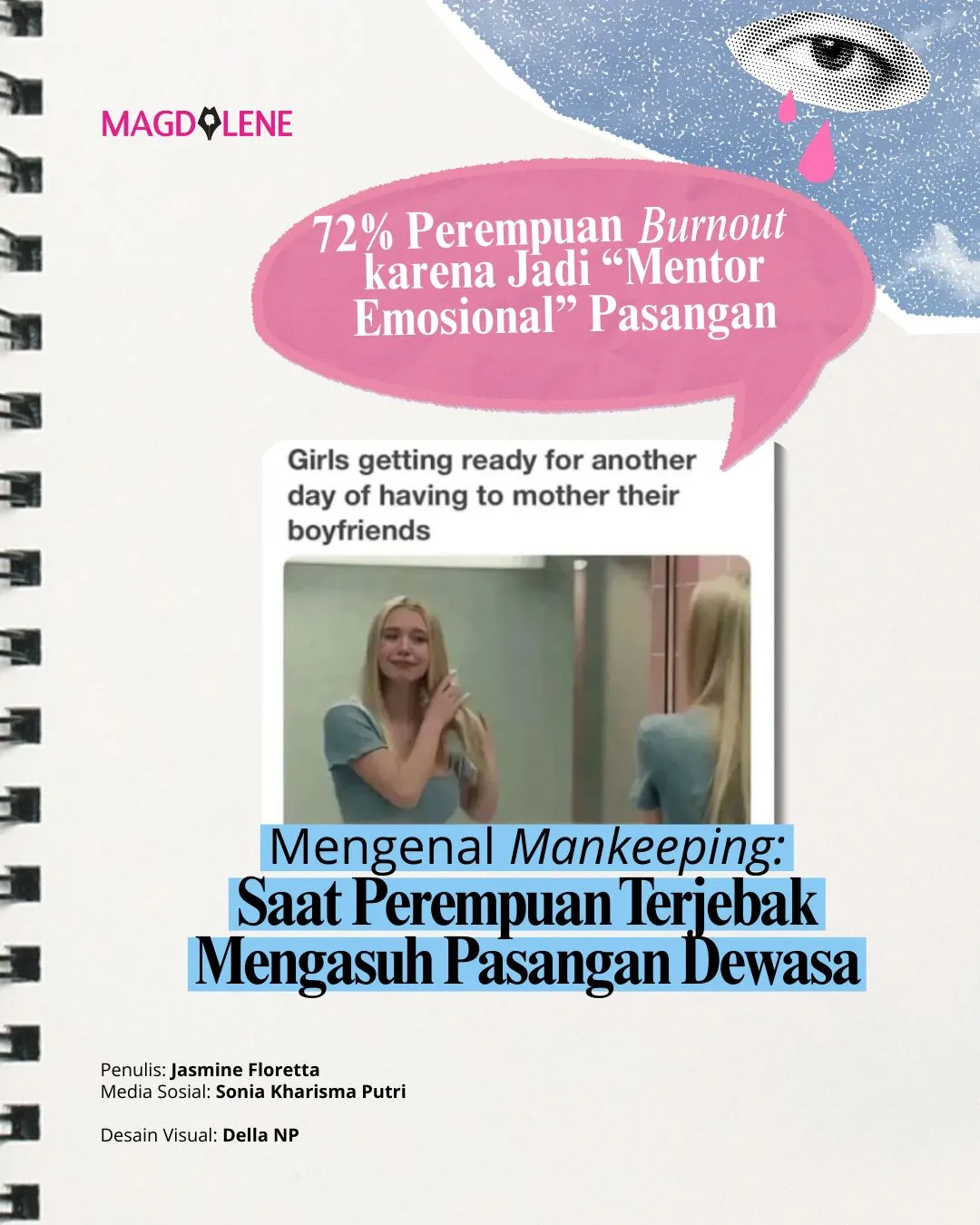My Curly Hair is Not the Problem; Our Beauty Standard Is

“Your hair is so curly, do you ever think about rebonding? Or smoothing?” my hairdresser said as he started to blow my hair dry during the usual every-few-months salon trip I took early this year. He went on to say a little praise about how my hair was quite a rare entity, and offered if I wanted to straighten it using a flat iron instead of blow drying it.
To me, this conversation was nothing new. Similar scenes have happened over and over again ever since I cared about going to hair salons at all. Hairdressers would look at my curly hair and offer me some sort of methods to straighten it. This particular time was no different, and as usual, I replied with a “no” and a smile. But there was something particularly distinct about the way I said no to the question that day: I expressed a protective, genuine liking to the curls I never plan to get rid of.
Growing up with curly hair, liking my own looks has always been challenging. Early adolescence was the most difficult time for me to be comfortable with the way my hair was textured. Middle school made me aware not only of how my curly hair was different among the dominating long and straight front-fringed hair styles, but also made me hate it. It troubled me that I had a headful of locks that were not luscious, that were full of mini-waves, and that wouldn’t stay in place. I was aware of it being considered not conventionally pretty.
The insecurity followed me to early adulthood, where I succumbed to straightening my hair with a flat iron almost every single week just to feel half-decent about how I would look during my daily campus activities.
I remember trying everything to tackle my curly frizz and to grow my hair long in the hope the weight would straighten it out, from shampoos, hair masks, vitamins, oils, creams, to homemade ingredients made of bananas, honey, olive oil, and shallots. I tried the no-poo method, tried washing my hair every other time with conditioner only (when I found out conditioners also had a cleansing nature), and even tried the good old traditional candlenut oil method recommended by a friend.
I tried the treatments provided by hair salons, even though most of them ended up disappointing me, as the hairdressers would impatiently deal with my curly and frizzy hair, failing to even give my hair a gentle finishing look. Instead of being patient and handling my hair with care, they would comment on the curls and suggested treatments to make my hair permanently straight, as if curly hair is a disease that they could cure.
The frustration and shame towards my own look made me jump from one method to another every time they did not seem to yield results, often ending up frustrated and wishing I had straight and luscious hair like other girls.
All the efforts I made seemed to yield minimum results, while the downsides were detrimental. Around the end of high school I was faced with a severe hair fall problem. Clumps of hair would fall off every time I ran my fingers through my hair. Some would also tangle around my hair ties when I tried to tie or untie my hair. My hairlines showed a significant thinning, and I was desperate to understand in what way I could help myself.
A school assignment to conduct an individual research led me to find out how hair products worked and how hair care really was actually very much industrialized like everything else—directed more towards profits rather than to actual hair health.
Through this knowledge, I discovered that to “heal” my hair, I should not drench it in all the “damage control” products and throw all kinds of creams and liquids on it. Rather I should let it come back to its natural cycle of growth and fall, and handle it with protective care. I discovered shampoos with milder ingredients and methods of washing, brushing, and styling that could be protective of breakage.
Around this time too, I found a hair salon that, had the grace of treating my curls with a little bit more patience, though I still get comments from the hairdresser’s on my hair texture. Still, it has helped me gain back my faith that there are places where my hair belongs.
With the newfound liking towards my natural curls, other opinions began to matter much less, especially those coming from hairdressers.
The battle with hair fall was won, but the battle with the curls was still ongoing. With healthier hair, I was more confident to style and straighten it with more treatments and heat. I straightened my hair on such a regular basis that I was not confident getting out of the apartment without having used flat iron.
It was on this one day that this began to change. I told my sister that all I needed was for my hair to grow longer. Until then, I would continue to straighten it.
“All you need is confidence,” she replied.
That simple sentence struck me unusually, and on the very same day I went out to eat with the entire family without having my hair straightened. On the way, I talked about my hair style with my sister and how it could work. My natural hair style would not render me looking indecent. During semester break, when I did not have to see my college friends, I stayed away as much as I could from the damaging heat.
The new semester started and I decided to leave my flat iron home while I lived in an apartment near the university. It was strange at first to see myself everyday with the curls on top of my head, but I forced myself to deal with my natural hair texture. It was greeted with a response much warmer than I thought it would get. There were still some people who got confused and exclaimed, “What happened to your hair?” But some other responses were very kind.
A friend of mine was so surprised upon entering the bathroom and seeing me, saying the hair style was very likable to her taste. Another friend met me on the elevator and thought I had my hair permed, and upon knowing that it wasn’t, said it was a quite distinct style. I took it as kind words. It was rare for people here to have this kind of hair texture, yes, and more importantly, to be able to embrace it well.
The process elevated the way I looked at my own locks and earned me more time away from the flat iron. So I decided to keep it just that way.
With the newfound liking towards my natural curls, other opinions began to matter much less, especially those coming from hairdressers. People in hair salons will comment on your hair anyway – the business runs on exploiting your insecurities, a friend put it. For now I find their comments fun and endearing.
Another factor that fundamentally helped me in gaining confidence about my own looks is the support of people closest to me. My sister is the one who has the deepest understanding of the problems I deal with my hair, and is often a helpful guru. My boyfriend expresses genuine liking towards my curls, which I really appreciate. And my parents are very generous in expressing kind praises. If other people see it as funny-looking, or different, then it’s not really my problem.
This note is dedicated to my own self-empowerment and is a salute to all women and girls out there dealing with similar hair struggles, a kind of body struggle that is often overlooked. This humbling process has made me understand that maybe I do have hair that is different, or maybe I do not. Either way, it cannot be taken for granted. My hair is a gift and I have made it go through unkind turmoil, when all along it is my perspective that I should have changed.
*Photo by Lluís Torrent Bescós






















